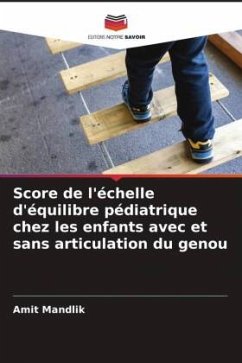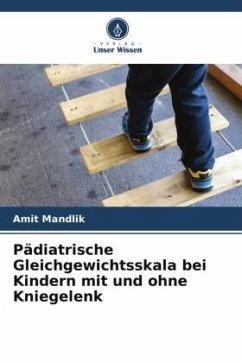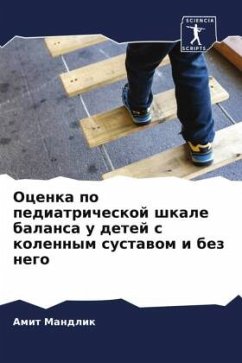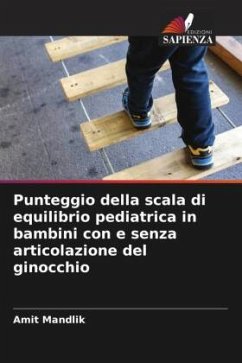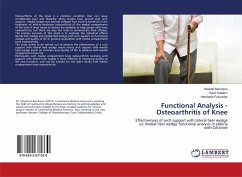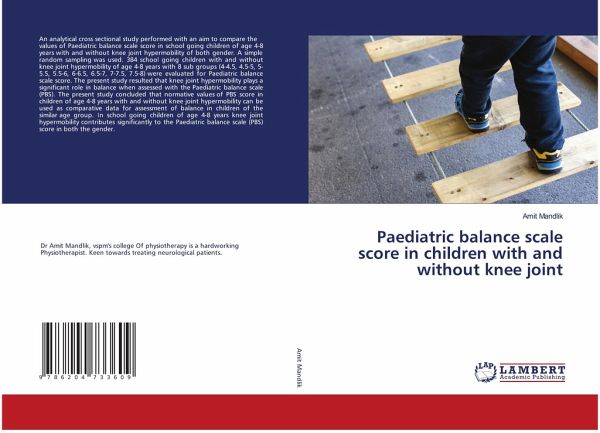
Paediatric balance scale score in children with and without knee joint
Versandkostenfrei!
Versandfertig in 6-10 Tagen
45,99 €
inkl. MwSt.

PAYBACK Punkte
23 °P sammeln!
An analytical cross sectional study performed with an aim to compare the values of Paediatric balance scale score in school going children of age 4-8 years with and without knee joint hypermobility of both gender. A simple random sampling was used. 384 school going children with and without knee joint hypermobility of age 4-8 years with 8 sub groups (4-4.5, 4.5-5, 5-5.5, 5.5-6, 6-6.5, 6.5-7, 7-7.5, 7.5-8) were evaluated for Paediatric balance scale score. The present study resulted that knee joint hypermobility plays a significant role in balance when assessed with the Paediatric balance scale...
An analytical cross sectional study performed with an aim to compare the values of Paediatric balance scale score in school going children of age 4-8 years with and without knee joint hypermobility of both gender. A simple random sampling was used. 384 school going children with and without knee joint hypermobility of age 4-8 years with 8 sub groups (4-4.5, 4.5-5, 5-5.5, 5.5-6, 6-6.5, 6.5-7, 7-7.5, 7.5-8) were evaluated for Paediatric balance scale score. The present study resulted that knee joint hypermobility plays a significant role in balance when assessed with the Paediatric balance scale (PBS). The present study concluded that normative values of PBS score in children of age 4-8 years with and without knee joint hypermobility can be used as comparative data for assessment of balance in children of the similar age group. In school going children of age 4-8 years knee joint hypermobility contributes significantly to the Paediatric balance scale (PBS) score in both the gender.



